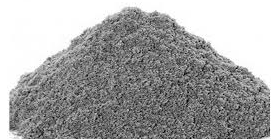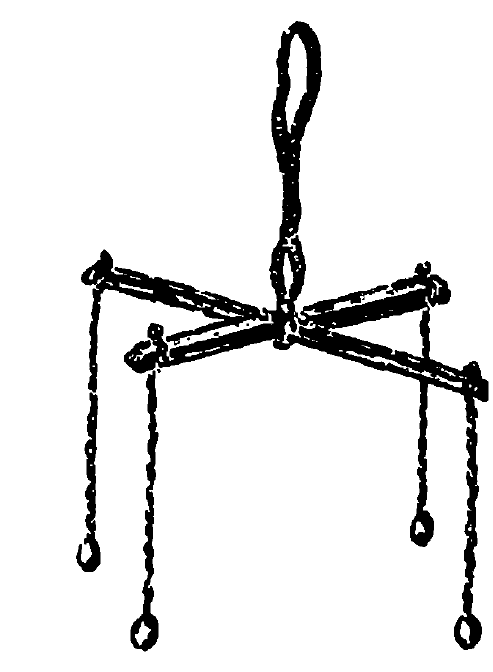The word “Soil” is derived from the Latin word “solum” which, according to Webster’s dictionary, means ‘the upper layer of the earth that may be dug or plowed specifically, the loose surface material of the earth in which plants grow’. The term ‘Soil’ has different meanings in different scientific fields. To an agricultural scientist, it means ‘‘the loose material on the earth’s crust consisting of disintegrated rock with an admixture of organic matter, which supports plant life’’. To a geologist, it means the disintegrated rock material which has/has not been transported from the place of origin.
But, to a civil engineer, the term ‘soil’ means, the loose unconsolidated inorganic material on the earth’s crust produced by the disintegration of rocks, overlying hard rock with or without organic matter. Foundations of all structures have to be placed on or in such soil, which is the primary reason for its engineering behaviour.
In general, soils are formed by weathering of rocks. The formation of soil happens over a very long period of time. The physical properties of soil are dictated primarily by the minerals that constitute the soil particles and, hence, the rock from which it is derived. The mineral grains that form the solid phase of a soil aggregate are the product of rock weathering. The size of the individual grains varies over a wide range. Many of the physical properties of soil are dictated by the size, shape and chemical composition of the grains.
Soils are formed over thousands of years through the weathering of parent rocks, which can be igneous, sedimentary or metamorphic rocks. Igneous rocks (e.g., granite) are formed by the cooling of magma (underground) or lava (above the ground). Sedimentary rocks (e.g., limestone, shale) are formed by gradual deposition of fine soil grains over a long period. Metamorphic rocks (e.g., marble) are formed by altering igneous or sedimentary rocks by pressure or temperature or both. Soils are quite different from other engineering materials, which makes them interesting and at the same time challenging.
Soil Mechanics
Karl Terzaghi (an Austrian geotechnical engineer, and geologist known as the "father of soil mechanics and geotechnical engineering) defined Soil Mechanics as follows:
“Soil Mechanics is the application of the laws of mechanics and hydraulics to engineering problems dealing with sediments and other unconsolidated accumulations of solid particles produced by the mechanical and chemical disintegration of rocks regardless of whether or not they contain an admixture of organic constituents.”
The term Soil Mechanics is now accepted quite generally to designate that discipline of engineering science which deals with the properties and behavior of soil as a structural material. All structures have to be built on soils. The application of the principles of soil mechanics to the design and construction of foundations for various structures is known as ‘‘Foundation Engineering’’. ‘‘Geotechnical Engineering’’ may be considered to include both soil mechanics and foundation engineering.
History and Development of Soil Mechanics
The use of soil for engineering purposes dates back to prehistoric times. Soil was used not only for foundations but also as construction material for embankments. The knowledge was empirical in nature and was based on trial and error, and experience. The hanging gardens of Babylon were supported by huge retaining walls, the construction of which should have required some knowledge of earth pressures. The large public buildings, harbours, aqueducts, bridges, roads and sanitary works of Romans certainly indicate some knowledge of the engineering behaviour of soil. This has been evident from the writings of Vitruvius, the Roman Engineer in the first century, B.C. Mansar and Viswakarma, in India, wrote books on ‘construction science’ during the medieval period.
The Leaning Tower of Pisa, Italy, built between 1174 and 1350 A.D., is a glaring example of a lack of sufficient knowledge of the behaviour of compressible soil, in those days. Coulomb, a French Engineer, published his wedge theory of earth pressure in 1776, which is the first major contribution to the scientific study of soil behaviour. He was the first to introduce the concept of shearing resistance of the soil as composed of the two components— cohesion and internal friction. Poncelet, Culmann and Rebhann were the other men who extended the work of Coulomb. D’ Arcy and Stokes were notable for their laws for the flow of water through soil and settlement of a solid particle in liquid medium, respectively. These laws are still valid and play an important role in soil mechanics.
Rankine gave his theory of earth pressure in 1857; he did not consider cohesion, although he knew of its existence. Boussinesq, in 1885, gave his theory of stress distribution in an elastic medium under a point load on the surface. Mohr, in 1871, gave a graphical representation of the state of stress at a point, called ‘Mohr’s Circle of Stress’. This has an extensive application in the strength theories applicable to soil. Atterberg, a Swedish soil scientist, gave in 1911 the concept of ‘consistency limits’ for a soil. This made possible the understanding of the physical properties of soil.
The Swedish method of slices for slope stability analysis was developed by Fellenius in 1926. He was the chairman of the Swedish Geotechnical Commission. Prandtl gave his theory of plastic equilibrium in 1920 which became the basis for the development of various theories of bearing capacity. Terzaghi gave his theory of consolidation in 1923 which became an important development in soil mechanics. He also published, in 1925, the first treatise on Soil Mechanics, a term coined by him. Thus, he is regarded as the Father of modern soil mechanics’. Later on, R.R. Proctor and A. Casagrande and a host of others were responsible for the development of the subject as a full-fledged discipline.
Application of Soil Mechanics
1) Foundations
The loads from any structure have to be ultimately transmitted to a soil through the foundation for the structure. Thus, the foundation is an important part of a structure, the type and details of which can be decided upon only with the knowledge and application of the principles of soil mechanics. A foundation is termed shallow foundation when it transmitted the load to upper strata of earth. A foundation is called deep foundation when the load is transmitted to strata at considerable depth below the ground surface. Pile foundation is a type of deep foundation.
2) Earth-Retaining Structures
When sufficient space is not available for a mass of soil to spread and form a safe slope, a structure is required to retain the soil. An earth retaining structure is also required to keep the soil at different levels on its either side. The retaining structure may be rigid retaining wall or a sheet pile which is relatively flexible. Such as retaining walls can be designed and constructed only by using the principles of soil mechanics and the concept of ‘soil-structure interaction’.
3) Stability of Slopes
If soil surface is not horizontal, there is a component of weight of the soil which tends to move it downward and thus causes instability of slope. The slopes may be natural or man-made. Soil engineering provides the methods for checking the stability of slopes.
4) Underground structures
The design and construction of underground structures, such as tunnels and conduits, require evaluation of forces exerted by the soil on these structures.
5) Pavement Design
Pavement Design may consist of the design of flexible or rigid pavements. Flexible pavements depend more on the subgrade soil for transmitting the traffic loads. Problems peculiar to the design of pavements are the effect of repetitive loading, swelling and shrinkage of sub-soil and frost action. Consideration of these and other factors in the efficient design of a pavement is a must and one cannot do without the knowledge of soil mechanics.
6) Excavations, Embankments and Dams
Excavations require the knowledge of slope stability analysis; deep excavations may need temporary supports such as ‘timbering’ or ‘bracing’, the design of which requires knowledge of soil mechanics. Likewise the construction of embankments and earth dams where soil itself is used as the construction material requires a thorough knowledge of the engineering behaviour of soil especially in the presence of water.
7) Miscellaneous Soil
The geotechnical engineer has sometimes to tackle miscellaneous problems related with soil. Such as soil heave, soil subsidence, frost heave, shrinkage and swelling of soils.





























